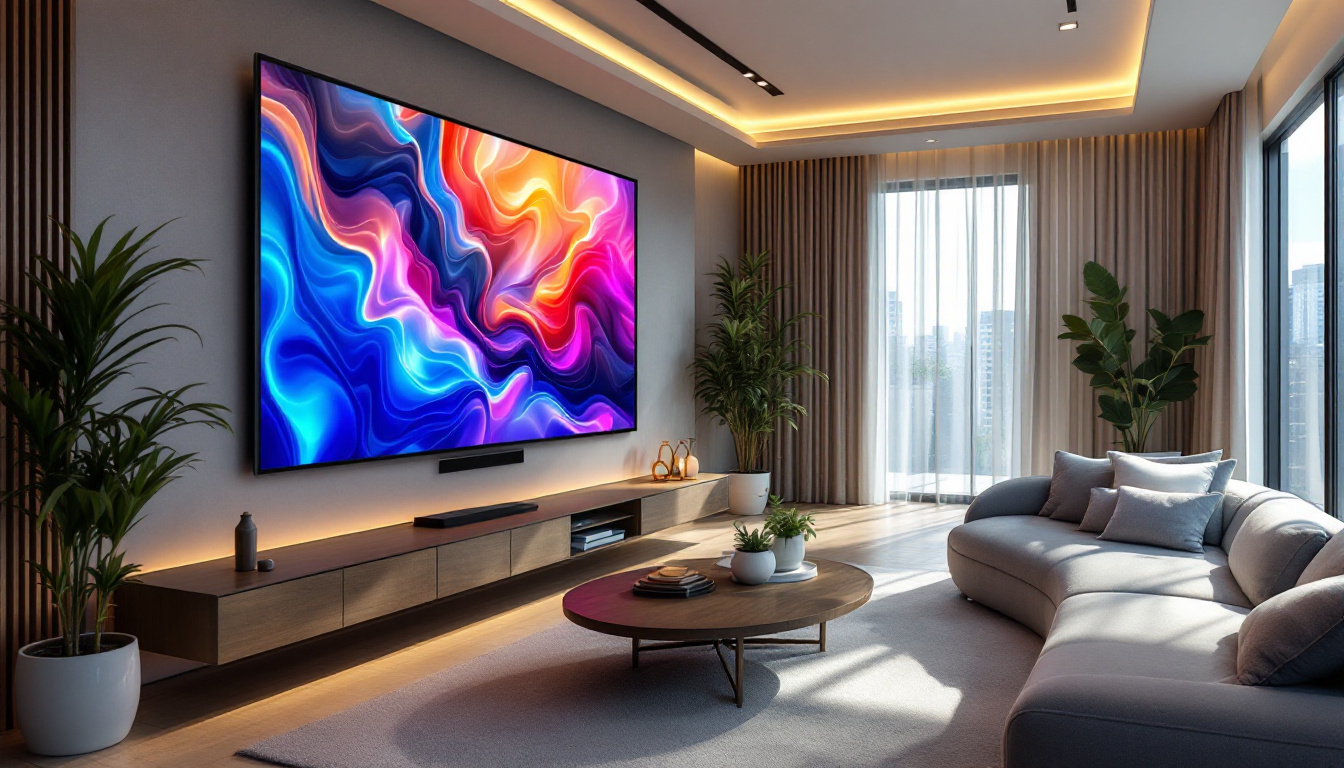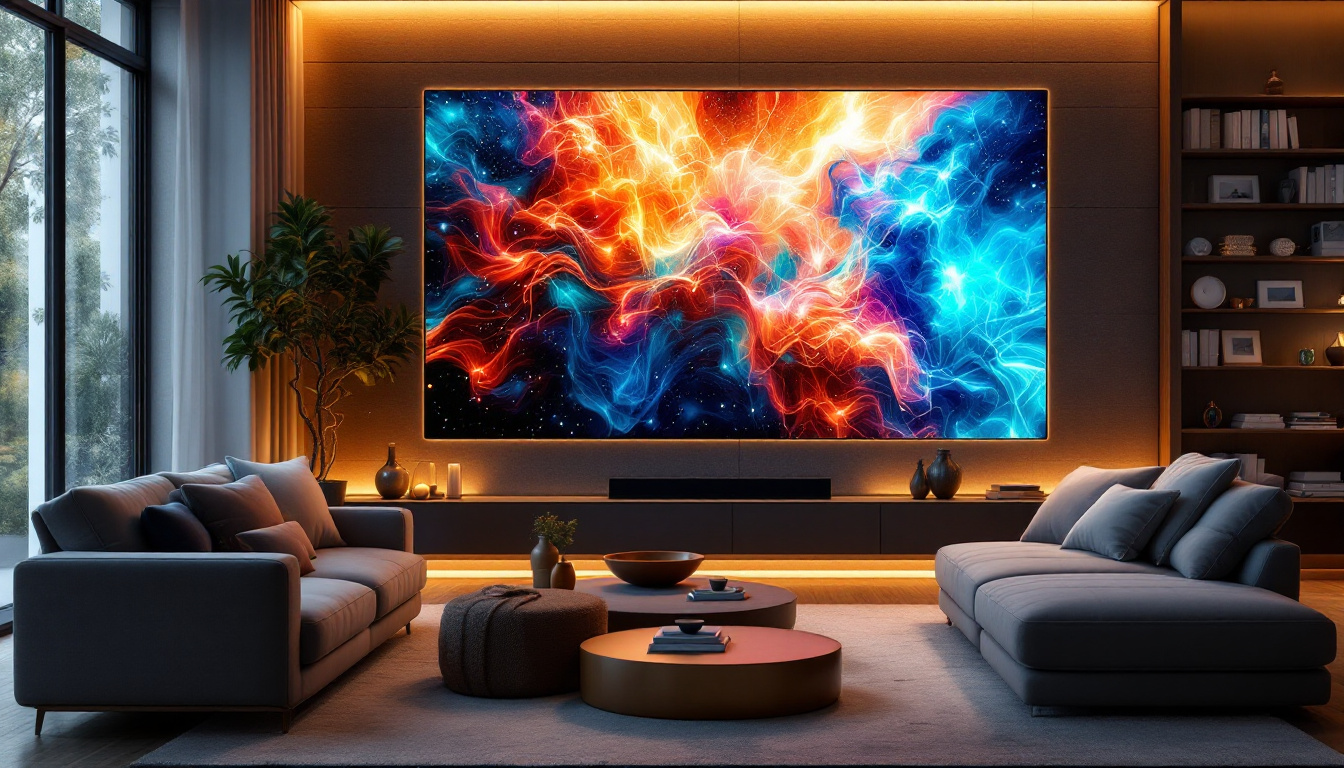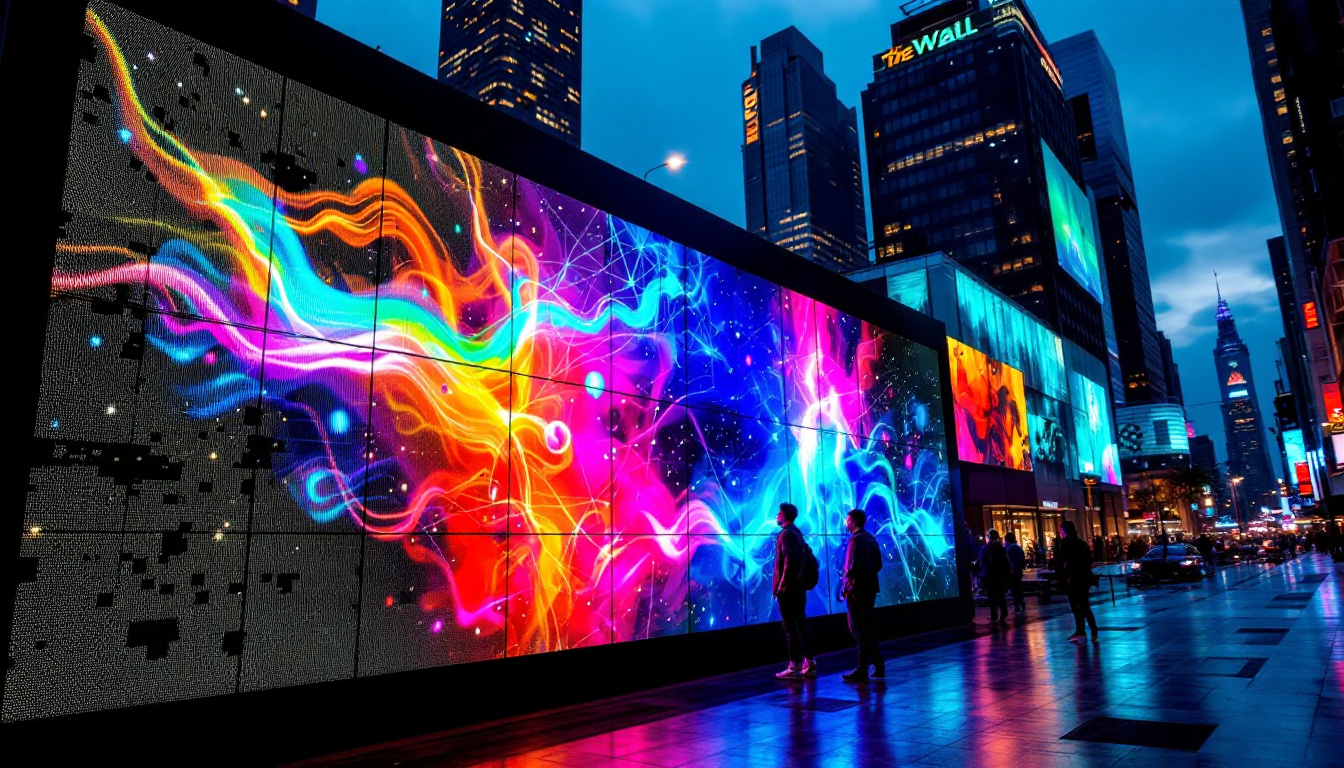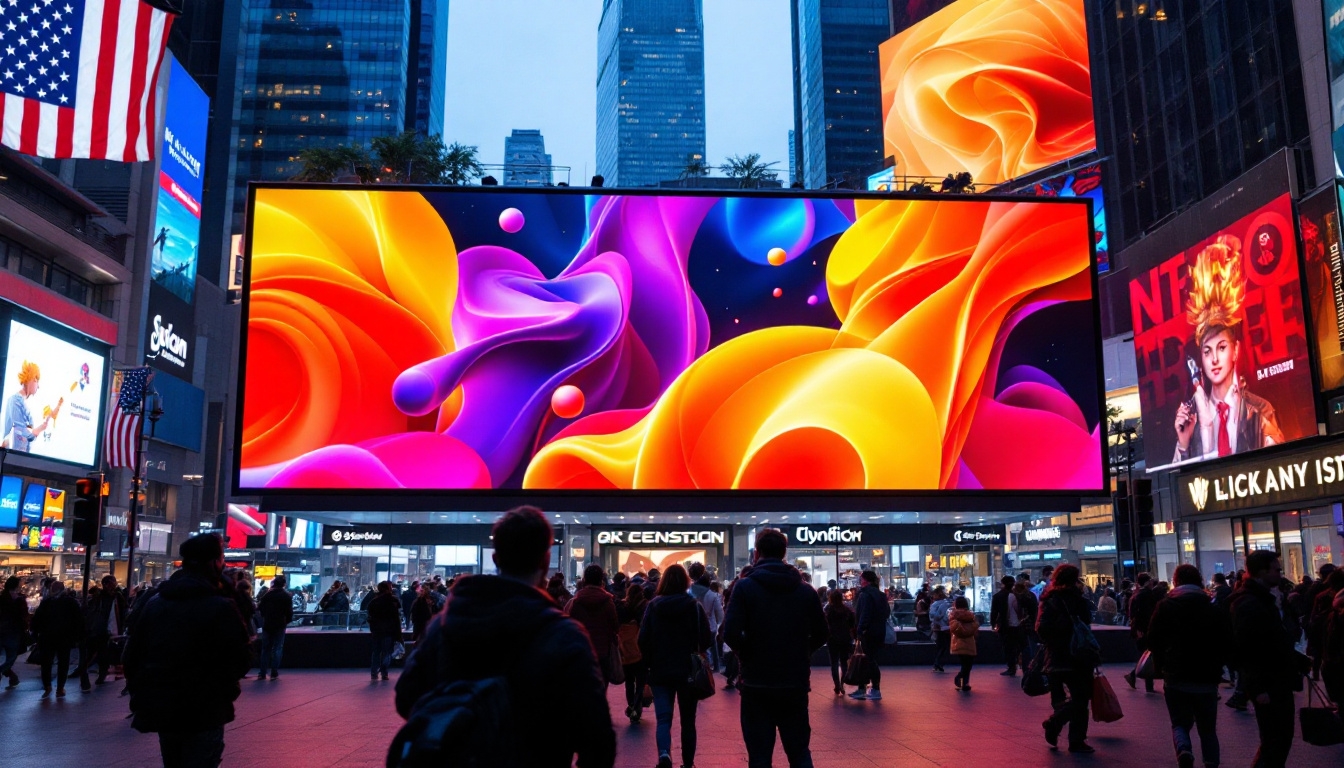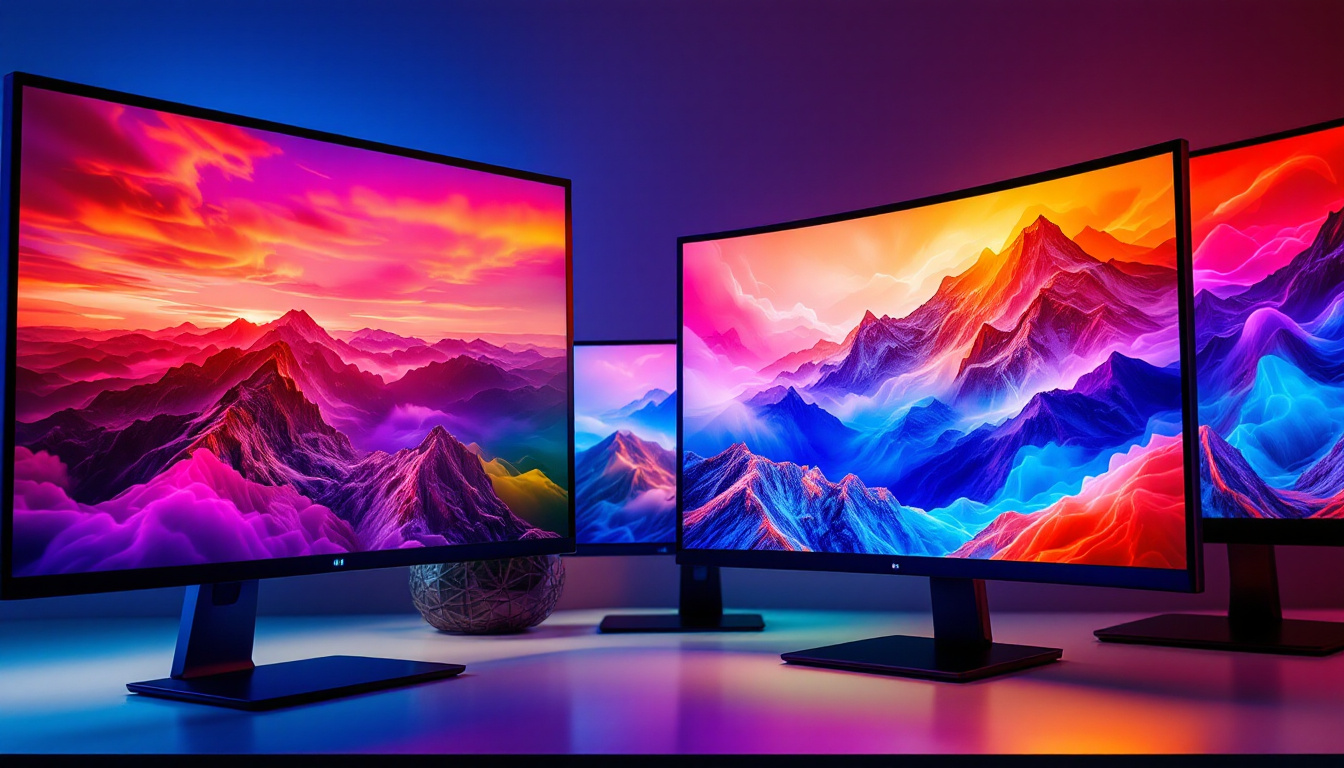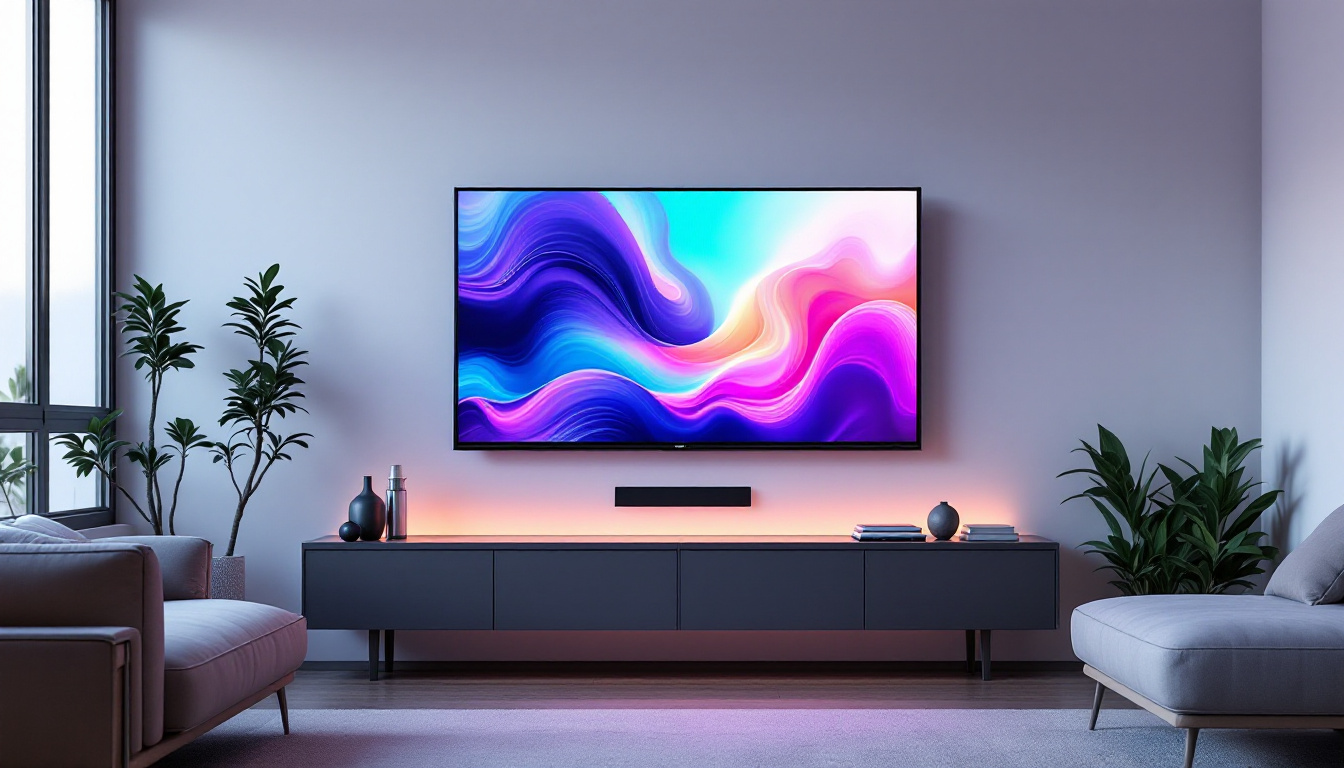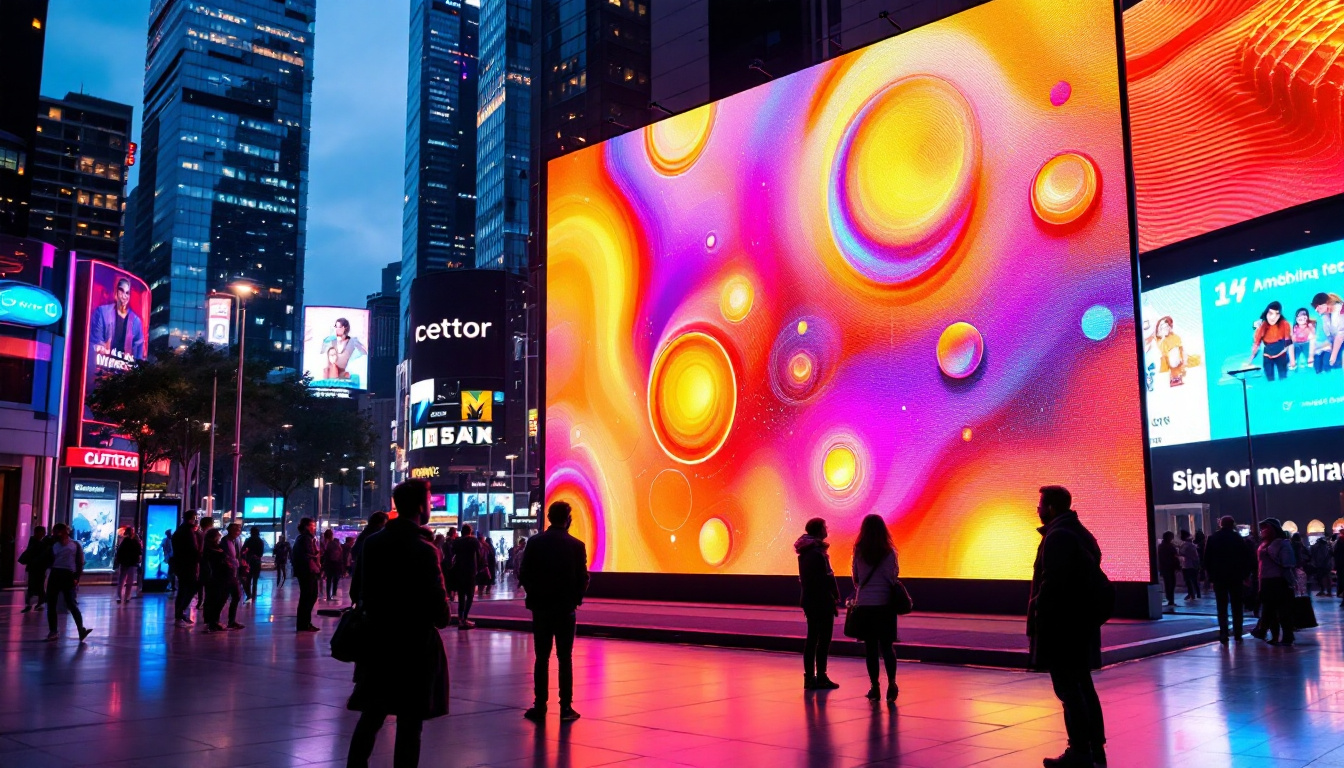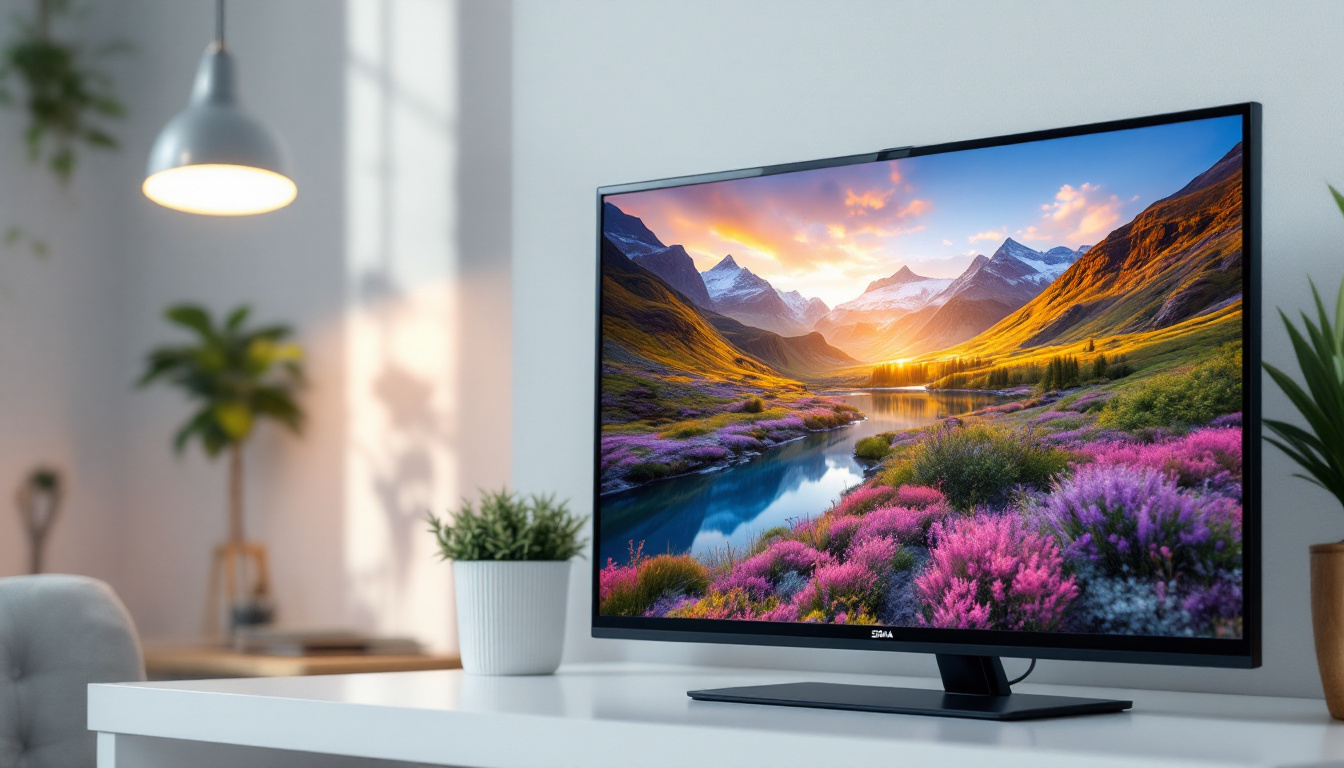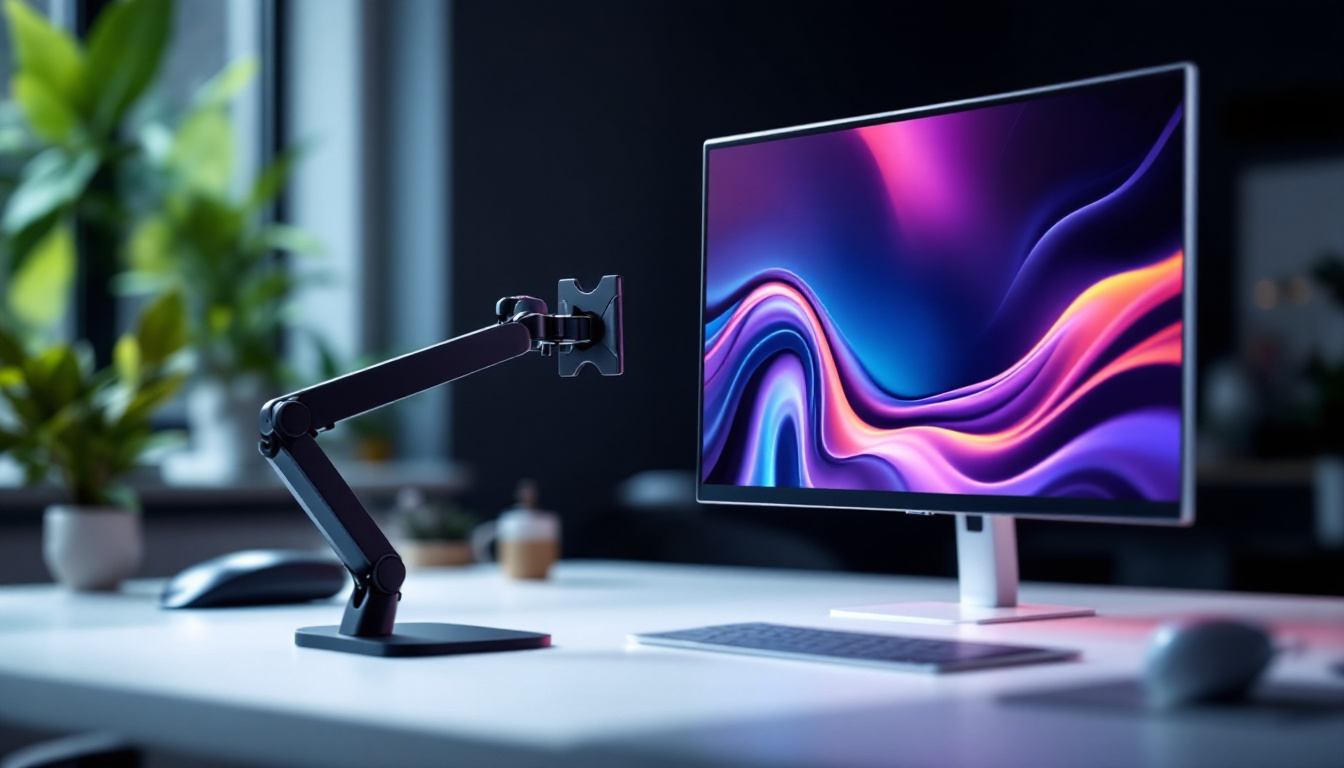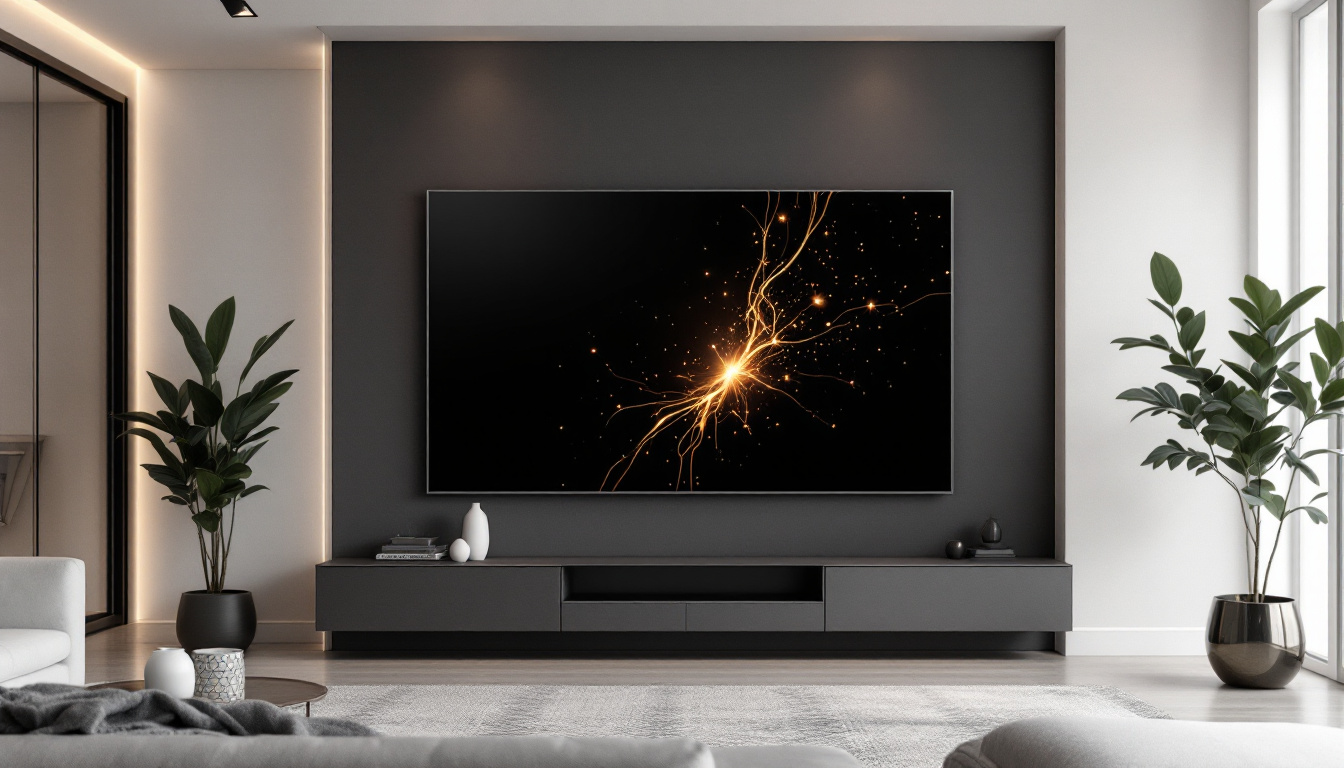In the ever-evolving world of audiovisual technology, the integration of LED displays into wall-mounted AV boxes has become a game-changer. This innovative approach not only enhances aesthetic appeal but also improves functionality in various settings, from home theaters to corporate environments. Understanding how these systems work and their benefits can help users make informed decisions about their audiovisual setups.
What is an AV Box?
An AV box, or audiovisual box, serves as a central hub for managing and distributing audio and video signals. Typically installed within a wall, these boxes can house various components such as receivers, amplifiers, and streaming devices. The integration of an LED display into an AV box adds a visual element that enhances user interaction and provides real-time information. This feature allows users to monitor system status, switch between inputs, and even troubleshoot issues without needing to access the components directly, making the AV box not just a functional device, but also a user-friendly solution for managing complex audiovisual setups.
Components of an AV Box
AV boxes come equipped with several essential components that work together to deliver a seamless audiovisual experience. These components often include:
- Input Ports: Multiple HDMI, USB, and audio input ports allow for various devices to connect easily.
- Control Systems: Advanced control systems enable users to manage their AV equipment through a single interface.
- Cooling Systems: Proper ventilation is crucial to prevent overheating, especially in tightly packed installations.
By understanding these components, users can better appreciate the functionality of an AV box and how it can enhance their audiovisual experience. Furthermore, many modern AV boxes are designed with smart technology integration in mind, allowing for compatibility with home automation systems. This means users can control their AV setup through voice commands or mobile applications, adding an extra layer of convenience and sophistication to their home entertainment systems.
Benefits of Wall-Mounted AV Boxes
Wall-mounted AV boxes offer a range of advantages that make them an attractive option for both residential and commercial spaces. Some of the key benefits include:
- Space Efficiency: By mounting the AV box within the wall, valuable floor space is preserved, allowing for a cleaner and more organized environment.
- Improved Aesthetics: A wall-mounted AV box can blend seamlessly with the interior design, reducing clutter and enhancing the overall look of the space.
- Enhanced Accessibility: Easy access to ports and controls makes it simple for users to connect and disconnect devices as needed.
In addition to these benefits, wall-mounted AV boxes can also contribute to better sound quality. By strategically placing the AV box within the wall, sound waves can travel more freely, minimizing obstructions that could otherwise distort audio. This is particularly beneficial in home theaters or conference rooms, where sound clarity is paramount. Moreover, many wall-mounted AV boxes are designed with cable management features that help keep unsightly wires hidden, further enhancing the visual appeal of the installation. This thoughtful design not only elevates the user experience but also ensures that the technology remains unobtrusive, allowing the focus to remain on the content being enjoyed.
Understanding LED Displays
LED displays have revolutionized the way information is presented. These displays utilize light-emitting diodes to create bright, vibrant images and text, making them ideal for various applications, from advertising to home entertainment. When integrated into an AV box, LED displays serve multiple purposes, enhancing both functionality and user experience. Their adaptability allows them to fit seamlessly into different environments, whether it be a bustling retail space or a cozy living room, making them a versatile choice for many users.
Types of LED Displays
There are several types of LED displays available, each with its unique characteristics and applications:
- Direct View LED: This type of display consists of individual LED modules that can be arranged to form large screens. They are known for their brightness and color accuracy, making them particularly effective for outdoor advertising and large-scale events where visibility is crucial.
- LED-backlit LCD: These displays use LED lights to illuminate an LCD panel, providing improved contrast and energy efficiency compared to traditional LCDs. They are commonly found in televisions and computer monitors, offering a balance of performance and cost.
- Organic LED (OLED): OLED displays offer superior color reproduction and contrast ratios, making them ideal for high-end applications. Their ability to produce deep blacks and vibrant colors has made them a favorite among filmmakers and graphic designers, who require precise color accuracy for their work.
Each type of LED display has its advantages and is suited for specific use cases, making it essential to choose the right one for your AV box installation. For instance, while Direct View LEDs are perfect for outdoor settings, OLEDs might be the preferred choice for indoor environments where visual fidelity is paramount.
Advantages of LED Displays in AV Boxes
Integrating LED displays into AV boxes provides numerous benefits, enhancing the overall user experience:
- High Visibility: LED displays are known for their brightness, ensuring that content is easily viewable in various lighting conditions. This feature is particularly beneficial in environments with high ambient light, such as trade shows or outdoor events, where traditional displays might struggle to compete.
- Energy Efficiency: LED technology consumes less power than traditional displays, making it a more sustainable choice. This not only reduces operational costs but also aligns with growing environmental concerns, appealing to eco-conscious consumers and businesses alike.
- Longevity: LED displays have a longer lifespan compared to other display technologies, reducing the need for frequent replacements. This durability translates into lower maintenance costs over time, making them a wise investment for both commercial and residential applications.
Moreover, LED displays offer remarkable flexibility in terms of size and shape, allowing for creative installations that can adapt to any space. Whether it’s a curved screen for an immersive viewing experience or a large video wall for impactful presentations, the possibilities are virtually limitless. This adaptability not only enhances aesthetic appeal but also provides a more engaging way to communicate information, making LED displays a preferred choice in modern AV setups.
Installation Considerations
Installing an AV box with an integrated LED display requires careful planning and execution. Several factors must be considered to ensure optimal performance and user satisfaction.
Location and Placement
The location of the AV box is critical for both functionality and aesthetics. Key considerations include:
- Viewing Angle: The display should be positioned at a height and angle that provides the best viewing experience for users.
- Accessibility: Ensure that the AV box is easily accessible for connecting and managing devices.
- Ventilation: Proper ventilation is essential to prevent overheating, especially in enclosed spaces.
Wiring and Connectivity
Proper wiring and connectivity are crucial for the effective operation of an AV box. Consider the following:
- Cabling: Use high-quality cables to ensure optimal signal transmission and minimize interference.
- Network Connectivity: If the AV box includes streaming capabilities, ensure a reliable internet connection is available.
- Power Supply: Adequate power supply must be provided to support all components housed within the AV box.
Applications of AV Boxes with LED Displays
The versatility of AV boxes with integrated LED displays makes them suitable for a wide range of applications. From residential setups to commercial installations, these systems can enhance the user experience in various environments.
Residential Use
In residential settings, AV boxes with LED displays can transform home entertainment systems. Home theaters can benefit from:
- Streamlined Control: Users can easily manage all their devices from a single interface, simplifying the entertainment experience.
- Enhanced Visuals: High-quality LED displays provide vibrant images for movies, games, and presentations.
- Integration with Smart Home Systems: AV boxes can be integrated with smart home technology, allowing for voice control and automation.
Commercial Use
In commercial environments, AV boxes with LED displays can significantly enhance presentations and advertising efforts. Benefits include:
- dynamic content display: Businesses can showcase promotions, announcements, and information in real-time.
- professional presentations: high-quality visuals can elevate the impact of presentations in conference rooms and meeting spaces.
- Customer Engagement: Interactive displays can engage customers, providing information and entertainment in retail settings.
Future Trends in AV Technology
The audiovisual landscape is continuously evolving, with new technologies and trends shaping the future of AV boxes and LED displays. Staying informed about these trends can help users make educated decisions about their setups.
Advancements in Display Technology
As technology advances, LED displays are becoming more sophisticated. Key trends include:
- Higher Resolutions: The demand for 4K and even 8K displays is on the rise, providing users with unparalleled image quality.
- Flexible Displays: Innovations in display technology are leading to flexible and curved screens, allowing for unique installation options.
- Interactive Displays: Touchscreen capabilities are becoming more common, enabling users to interact directly with content.
Integration with Artificial Intelligence
Artificial intelligence (AI) is making its way into AV technology, enhancing user experiences through:
- Smart Recommendations: AI can analyze user preferences and suggest content based on viewing habits.
- Voice Control: Integration with AI voice assistants allows users to control their AV systems hands-free.
- Automated Adjustments: AI can automatically adjust settings based on environmental conditions, such as lighting and sound levels.
Conclusion
AV boxes with integrated LED displays represent a significant advancement in audiovisual technology. Their ability to enhance functionality, improve aesthetics, and streamline user interaction makes them an attractive option for both residential and commercial applications. As technology continues to evolve, the future of AV boxes and LED displays promises even more exciting possibilities.
By understanding the components, benefits, and applications of these systems, users can make informed decisions that enhance their audiovisual experiences. Whether for a home theater or a corporate environment, the integration of an AV box with an LED display is a step towards a more connected and visually engaging future.
Explore Cutting-Edge LED Display Solutions with LumenMatrix
Ready to elevate your audiovisual experience with the latest in LED display technology? LumenMatrix is at the forefront of innovation, offering a wide array of LED display modules designed to bring your brand to life and captivate your audience. From immersive Indoor LED Wall Displays to dynamic Outdoor LED Wall Displays, and from versatile Vehicle LED Displays to engaging LED Sports Displays, our solutions are crafted to transform your visual communication. Discover the full potential of LED displays and how they can enhance your space by visiting LumenMatrix LED Display Solutions. Step into the future of visual engagement with LumenMatrix today.

